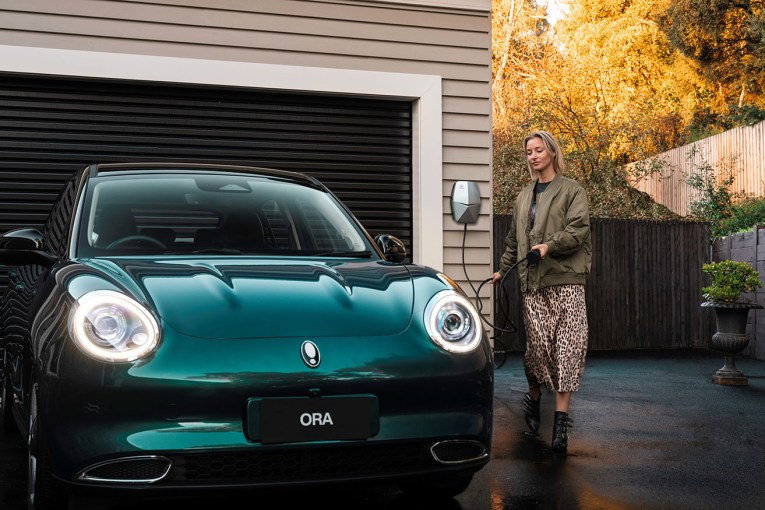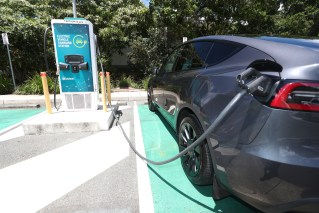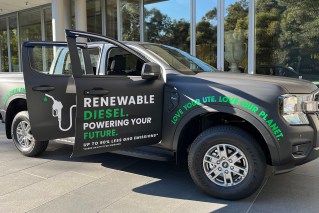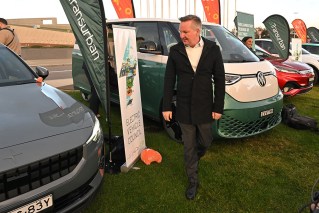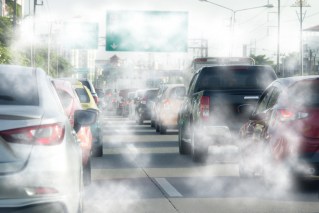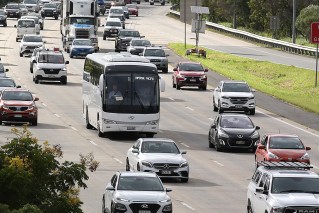50 years of the Holden Design Studio
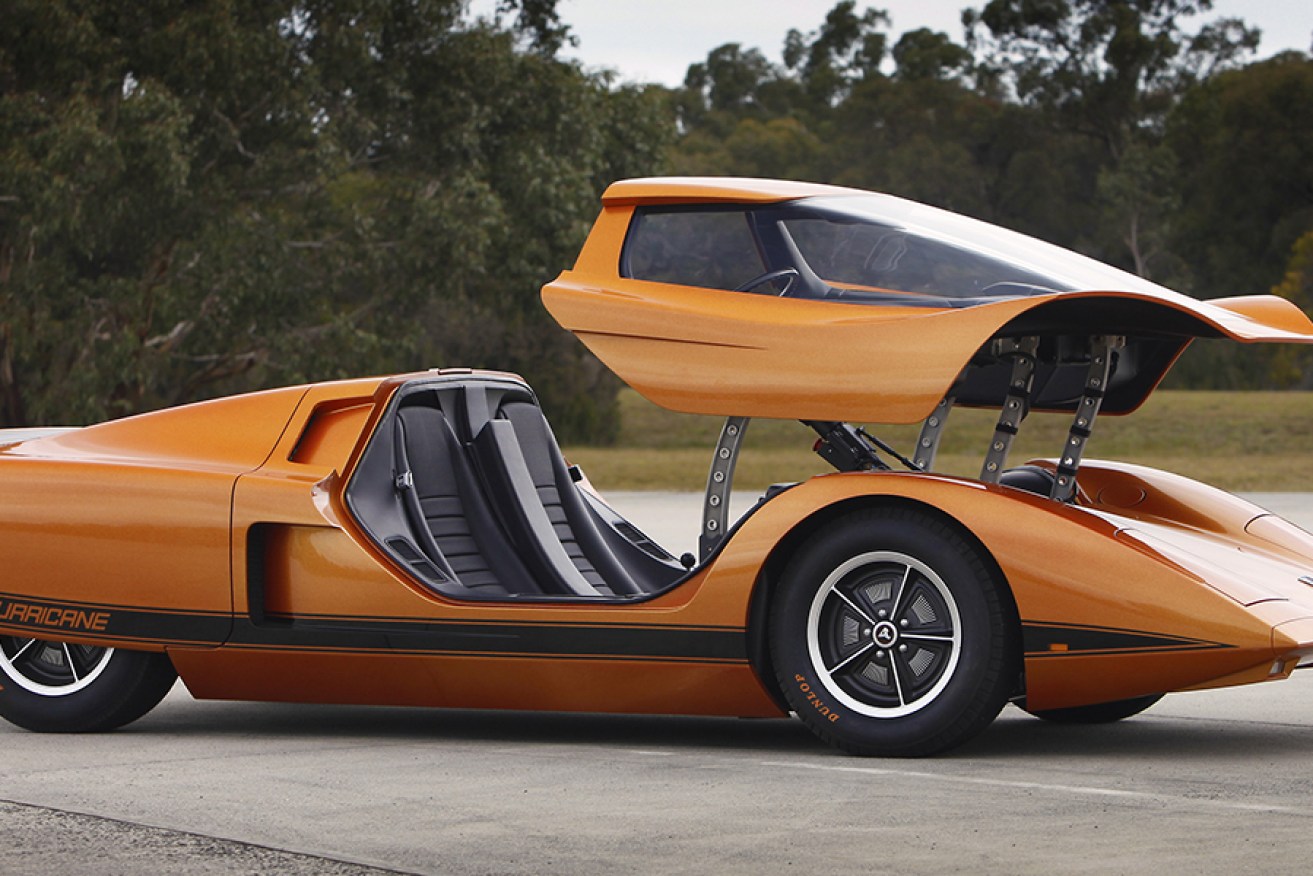
Now known as GM Australia Design, the Holden Design Studio celebrates 50 years of continuous operation in 2014.
It’s an anniversary tinged with melancholy, following so soon after the announcement Holden will cease to build cars locally. That the announcement was misinterpreted by many to mean a total withdrawal from the market by Holden – and the consequent cessation of operations by the design studio – drove Michael Simcoe to arrange a visit by local media to the Port Melbourne facility.
Simcoe, known as the father of the modern era Monaro, is the Vice President of GMIO Design, and the local design studio falls within his remit.
“The whole of this… was all about answering the question that I keep hearing… [and] I know Ed [Welburn] keeps hearing. This event came out of a discussion he and I had, because frankly, he’d gotten sick of all the Australian journalists asking him at shows ‘What about Holden Design?’
“Why do they still exist? All that sort of stuff…
“I guess I’ve been asked the question since we announced that we would stop manufacturing, why would you invest in a design facility this far away from the mothership?
“The reality is this place has been around – certainly in this building – for 50 years, doing very credible design work. A hundred per cent of it in the past was all local product…”
Ed Welburn is Vice President of global design at General Motors, and Simcoe, in GM’s International Operations, reports to him. According to Simcoe, the Port Melbourne facility “delivers” and is “one of the most mature studios in GM.”
Port Melbourne is one of just 10 design studios in the GM world and one of just two (the other being in Detroit) capable of developing a concept car from scratch and carrying the project through to full fabrication. GMA Design’s on-going operation beyond 2017 has been approved at the very highest level of General Motors, Simcoe says, with recently appointed CEO Mary Barra giving it the tick of approval.
The reasons for maintaining the Australian design facility are many and varied. There are security gains by having projects undertaken at arm’s length from prying eyes in North America; there are potential cost savings too and work can carry on jointly – in different time zones – up to 16 hours a day, but mostly it’s because the Aussie studio is staffed by talented people, many of whom have gone on to bigger and better things within GM.
Including contractors, around 140 staff work within the design studio, which has worked on GM brands as diverse as Cadillac, Buick, Vauxhall and Opel (and Holden of course). The studio was built in 1964 and its first major project was the HR Holden of 1967. Prior to that all Holden design was carried out in the USA.

1969 Holden Hurricane Concept.
Recent programs with which the studio has been involved include the Cruze hatch, the Camaro and the Caprice PPV (police interceptor), which earns its “greatest accolades” from “repeat offenders,” according to GM Australia Design Director Richard Ferlazzo, the man who penned the Efijy show car – a tribute to the 1953 FJ Holden.
Efijy was taken from sketch to final fabricated product without leaving the design studio, but has garnered awards around the world since, including ‘Concept car of the year’ in 2007. Ferlazzo tells the story of being approached by someone representing a Middle Eastern sheik. With gold pen and chequebook in hand, the representative offered to buy Efijy. The offer reached $20 million before the buyer admitted defeat in the face of Ferlazzo’s insistence the show car was not for sale.
Taking into account materials (about $200,000 to $300,000) and 10,000 hours of ‘Skunkworks’ labour, the Efijy probably set back Holden about $1.2 million, according to Ferlazzo – so there’s probably a highly profitable business model based around dramatic visual impact show cars… as long as you have a rich vein of sheiks ready to hand over the cash.

The Holden Efijy.
Holden destroys the clay moulds used to build the showcars, although the decision to turf the moulds for Efijy wasn’t undertaken lightly. There was quite some delay and lots of ‘should we/shouldn’t we?’ discussion before the decision was made to chop up the moulds. As Simcoe points out, however, the Maya data for the Efijy remains on file.
Efijy was built in the fabrication area and is finished in a material named ‘vinylester’, coated in 18 layers of paint. A much more durable finish than epoxy, vinylester allowed Ferlazzo to drive the car down Woodward Avenue for the Detroit Dream Cruise – on a bright, sunny day, without the car getting soft around the edges.
Fabrication is the final process in developing a concept car. Before that the concept car is taken from sketch (using Photoshop) through scale models, digital sculpting/design visualisation (animation with Autodesk Maya – a program developed for animated movies), clay models, interiors and finally the end product. There are also intermediate steps along the way, including ‘Creative Digital Imaging’ – which involves the production of mini movies replicating with sophisticated CGI an entire car or sweeping visuals of a projected car’s interior.
Any one of these steps could be skipped or dropped (including the fabrication of the end product) if someone along the way decides that the concept or a procedure can be abandoned. But if the concept gets the green light all the way through, there are two steps that aren’t skipped – clay modelling and fabrication. And depending on whether the concept is to be a ‘high-end see-through model’ or not, interior design has to get a look-see as well.
Fabricated concept cars, such as one motoring.com.au was privileged to see during the visit, typically comprise an FRP (fibreglass) body over a steel frame. The frame comes with rudimentary steering and adjustable ‘suspension’ to raise or lower the ride height, both of which permit the car to be moved in and out of premises easily, but also enhance photography with the wheels turned and the body lowered near to the ground.
The frame is a modular set-up, with adjustable track as well. Fibreglass panels are cast from a clay buck and then fitted to the car in what can be an exterior design concept or a ‘high-end see-through model’, which will feature faux interior panels, seats and instruments.
Fabricated concepts just don’t get built at Holden without clay models first. Both Simcoe and Ferlazzo agree that clay models are still the best way to picture in 3D how a car will look. If there’s a styling detail that doesn’t look right, it’s spotted quicker than with a virtual reality screenshot – and it’s easily fixed too, by simply reheating the synthetic clay and moulding it into a different shape.
Ferlazzo was reluctant to point the finger at any particular brand, but both he and Simcoe say that the expert eye can look at a car on the street and tell whether it was developed with or without clay modelling during the design process.
“The last bit of refinement has to be done with the artisan’s touch,” says Ferlazzo, who claims that he doesn’t expect to see an end to clay modelling in his lifetime. And he challenges any designer to “make the call” using on-screen virtual reality alone.
Simcoe supports Ferlazzo’s comments, and explains too that a clay model can evoke a “different emotional response” each time it’s viewed. Virtual reality can’t achieve that, he asserts. And Simcoe cautions that VR brings a whiz-bang coolness to vehicle design, but it’s a servant, not a master.
“Technology is about supporting the art; not the other way around.”
One concept recently completed at GMA Design is the Chevrolet Adra, a vehicle jointly developed by Holden and GM India for the Indian market if it goes into production.

The Chevy Adra.
That car has been a total design package (although you can’t open the doors). It’s a ‘see-through’ model with colours (Marigold Yellow) and trim developed specifically for the car, which was unveiled to the public in Delhi two months ago. The dash layout was a blend of two different proposals from the Australian and Indian design teams; the final result incorporating a tray in the dash above the centre fascia for the locals to place their religious icons. Kirsty Lindsay, Chief Designer for Colour and Trim at Port Melbourne, says that interior-based projects can run from three weeks up to four years, for a new fabric technology study.
The Adra was fabricated in Port Melbourne, from a clay model that was milled from data exported from Autodesk Maya – a program most likely employed to render your favourite Dreamworks or Pixar animated movies. According to GMA Design’s Digital Sculpting Manager, Peter Innes, Maya supports the Port Melbourne facility’s global compatibility with other GM studios around the world in order to collaborate on various projects. It exports data very quickly, says Innes, and can be rigged to run a VR concept around a racetrack on screen, enhancing the visual perception of the car – much like an XBox.
Adra is the latest project from Port Melbourne to see the light of day at a major motor show. Others preceding in the years since the fabrication shop opened include the Elfin Streamliner (one of Simcoe’s designs), the Torana TT36, Efijy, Denali XT, Aveo RS/Sonic unveiled in Detroit back in 2010 and the Cruze hatch first seen in Paris the same year.

The Torana concept car.
Those are the models that the public gets to see, but there are many concepts that are only ever seen by GM execs. They take weeks or months at a time to develop, but may be shelved for any number of reasons.
“Any design organisation has a pretty huge waste rate,” says Simcoe.
GMA Design’s current project was half-way through fabrication as this article was published. It has been reviewed by Ed Welburn, via a video link. The fabricated vehicle is an ‘internal concept’, which means it’s unlikely it will ever be seen outside a secure GM facility. One day it may surface if GM ever decides to trot out its fantastic concepts from the past, but in the immediate future it will simply go into storage once the final review process is complete and its story has been told to all who need to know.
This prompts an obvious question: does it frustrate designers to see their work archived so soon, with no chance for the public to see it as they might a canvas in an art gallery?
“It’s always nice to see something that your team’s designed, driving on the roads,” admits Simcoe, “but the difference now is rather than doing Commodores, we’re influencing a number of vehicles… a number of brands.”
“You’d have a hard time getting any of the designers to tell you they hate what they’re doing right now – because they’re doing more of it… and more varied work.
Simcoe turns the question back on itself, pointing out that prior to VE, the design studio was doing little more than versions of “other people’s products,” and “that was pretty frustrating too.”
Ferlazzo chipped in at that point, explaining that the studio’s function has changed now, but it’s more in line with what other studios around the world do.
“I can tell you the designers are stoked at this [that] we’ve got more variety… more stuff on the floor now than ever before. There are studios around the world that do exactly this. Their stuff is never seen… that’s what they’re there for. They’re exploratory studios.
“The value here is that we can still do some production work, we can do exploratory work… and we can influence production cars. So we’ve actually got a greater range of… projects to design now… more so than before.”
One thing that will be lost with the closure of local manufacture in 2017 is Holden’s engineering resource to take a car from concept to production – one example being the Chevy Camaro.
A show car developed in North America in 2006, the Camaro was ‘productionised’ in Australia on a modified version of the VE Commodore’s Zeta platform.
“It was almost the direct opposite of the situation we find ourselves in now,” Simcoe explained.
As for the latest concept car GMA Design is working on? I’d love to tell you more, but there’s an NDA with my name on it in a filing cabinet located at Holden’s head office in Salmon Street Port Melbourne…
